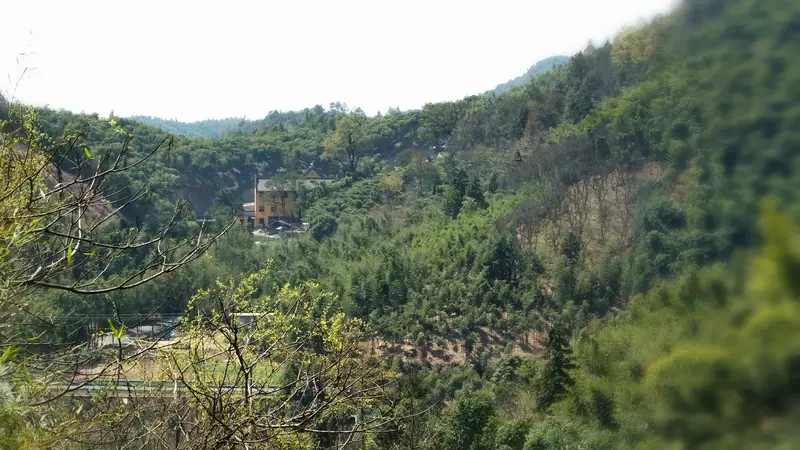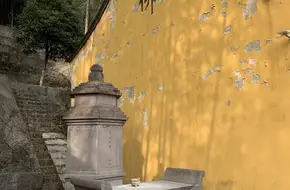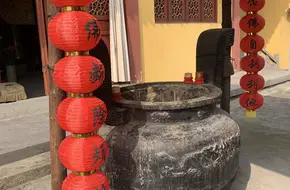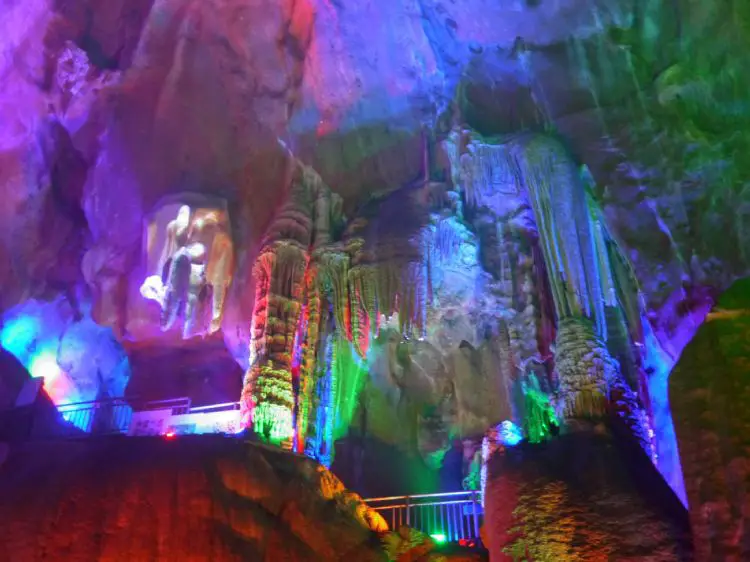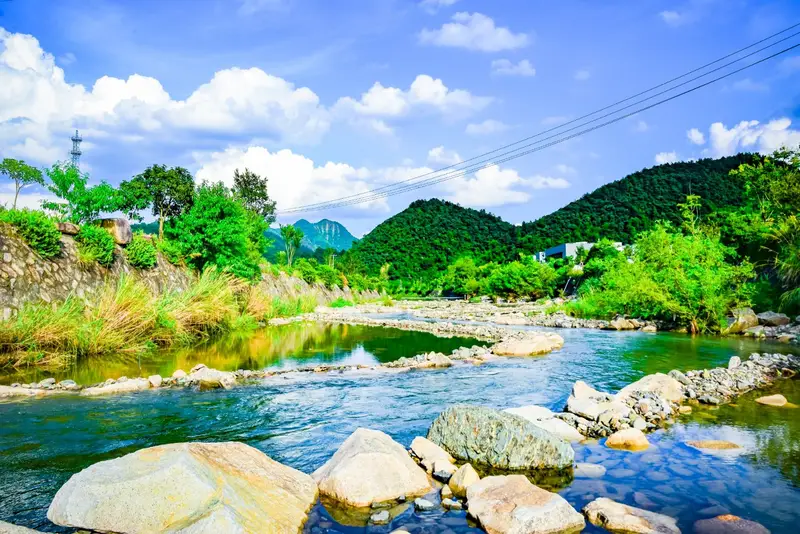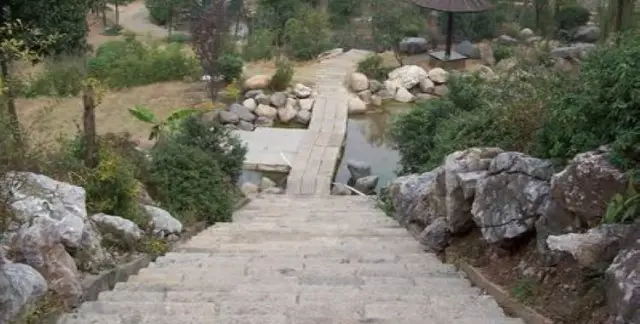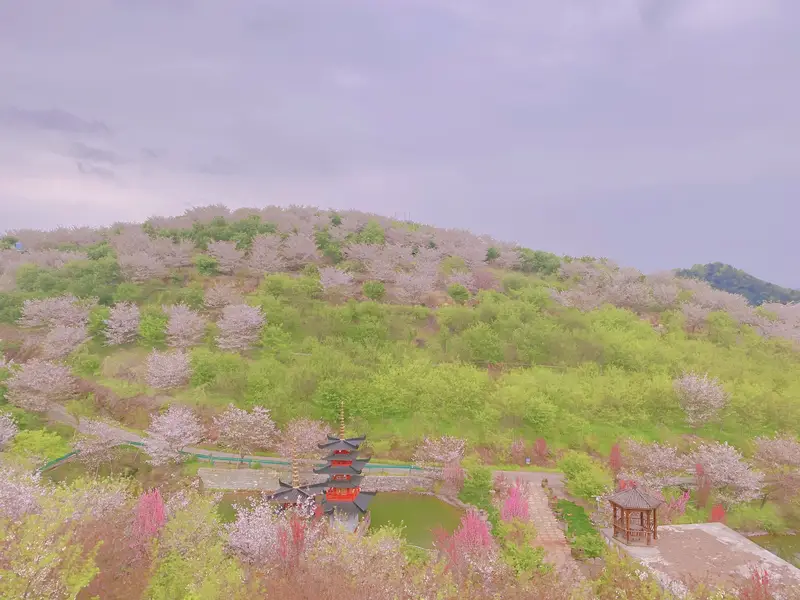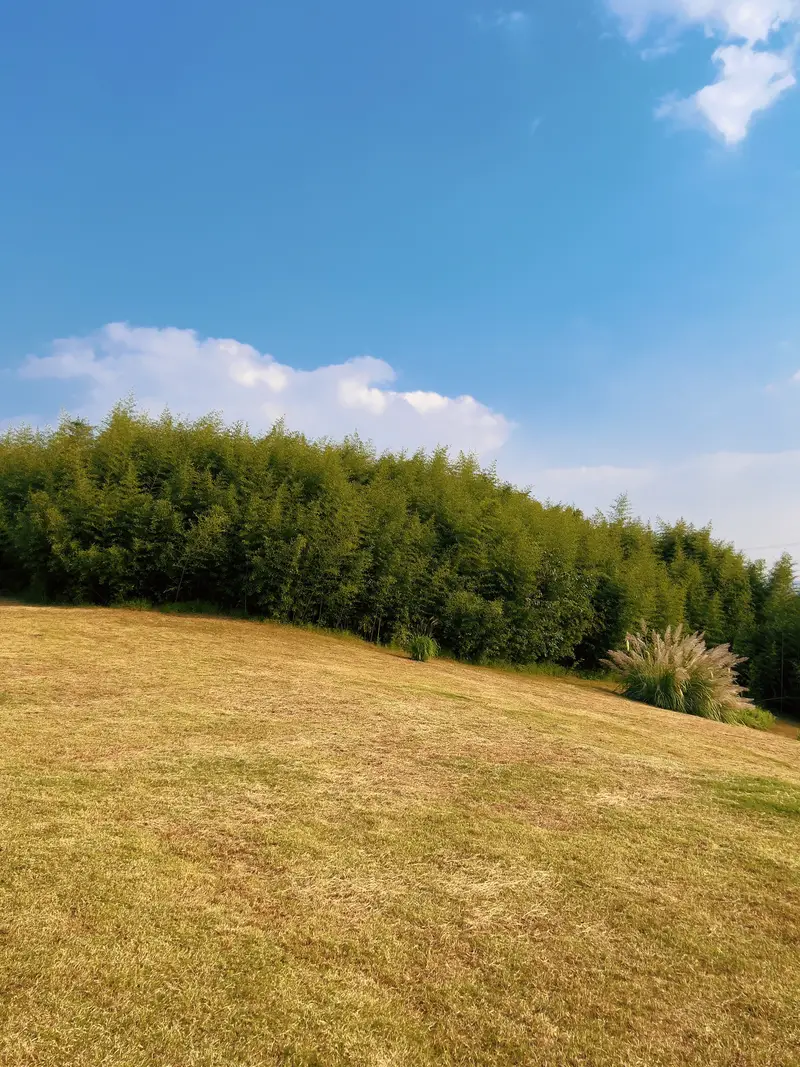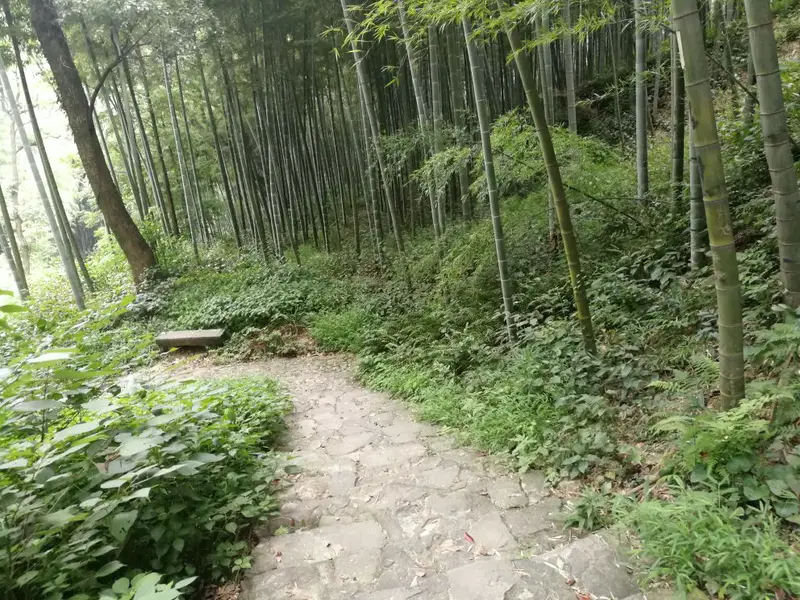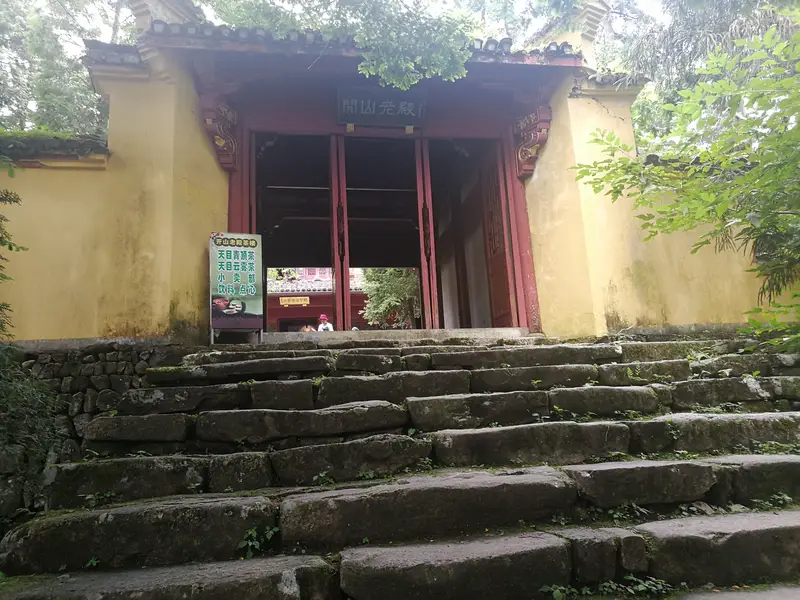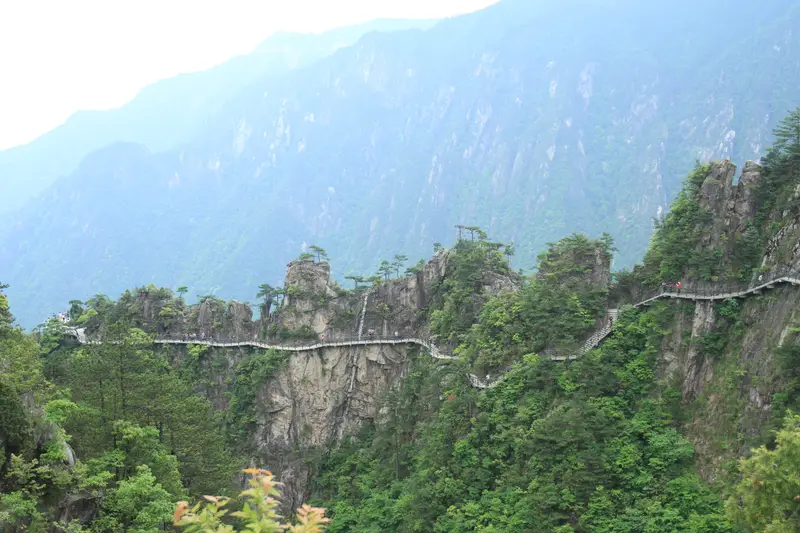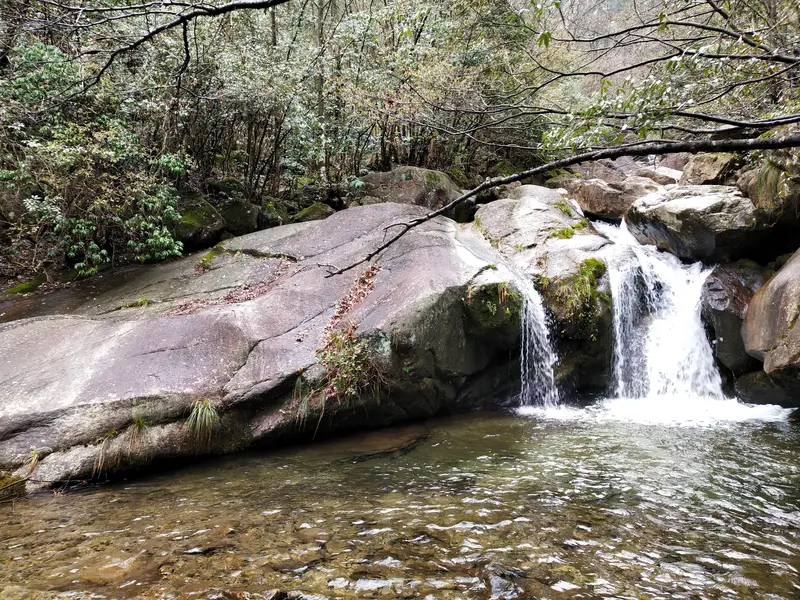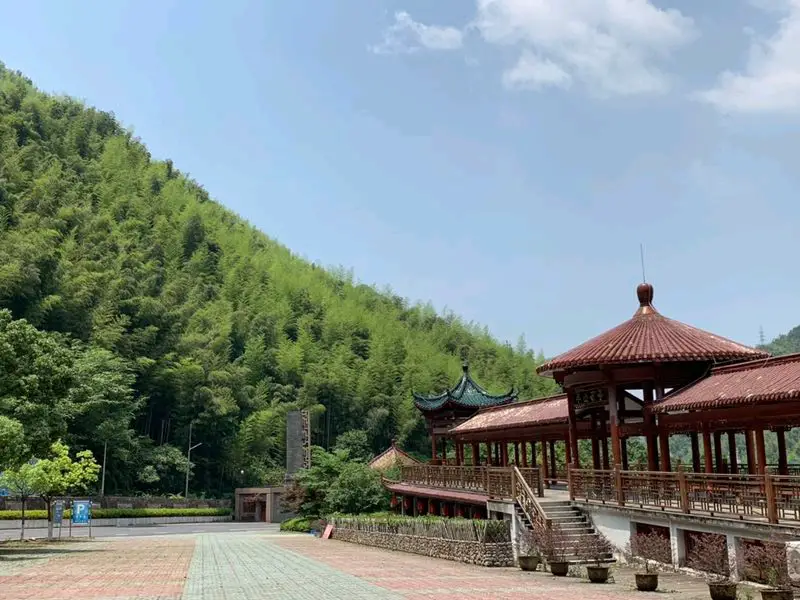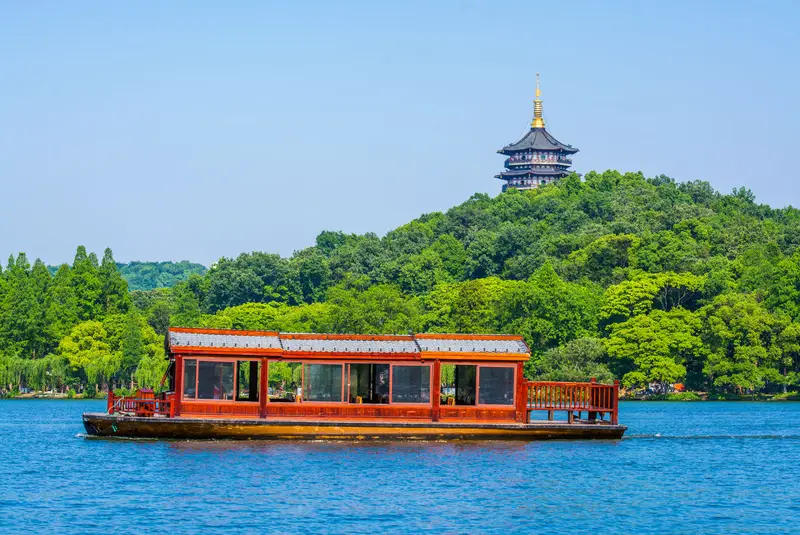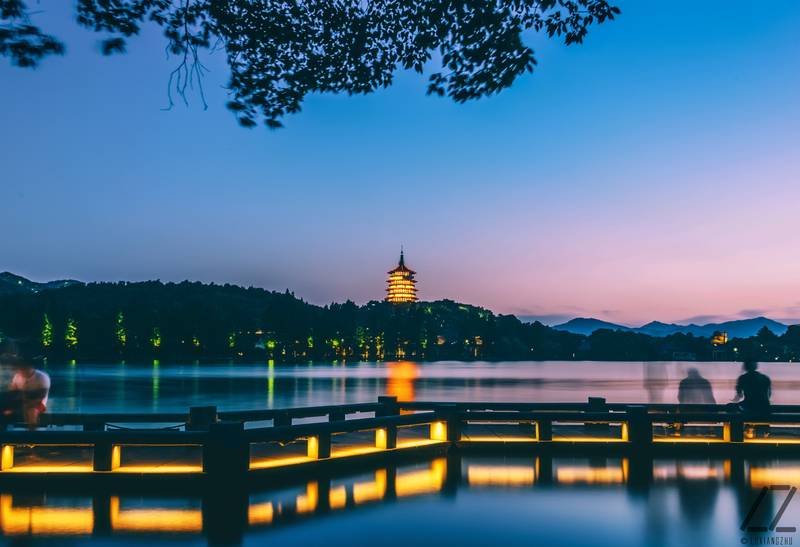Tanshi Temple sits in Shimen Village, Pingyao Town, Yuhang District, about 30 kilometers northwest of downtown Hangzhou. To reach this hidden gem, drive along the G50 expressway (Hu-Yu-Wen Highway) and take the Pingyao exit. From there, it’s a 10-minute taxi or bike ride to the temple. Public transport users can take metro Line 2 to Liangzhu Station, then transfer to bus 478 or 498 toward Pingyao—ask locals for directions, as the last stretch might require a short walk or ride-share. The temple’s surrounded by lush hills, so expect a scenic, peaceful journey!
Natural Scenery: A Mountain Sanctuary
Nestled between four peaks—Bijia Mountain (south), Shizi Mountain (east), Baihe Mountain (west), and Zhuangyuan Mountain (north)—Tanshi Temple feels like a secret tucked into nature. In spring, wildflowers blanket the slopes, while autumn paints the forests with red and gold. A gentle stream flows nearby, and ancient trees shade the temple grounds. For hikers, trails lead up nearby hills for panoramic views of the valley. Bring a camera—sunrise and sunset here are magic, especially when mist wraps around the mountains.
Cultural & Historical Vibes
Originally built in 942 AD (during the Later Jin Dynasty) as Lingshi Temple, Tanshi Temple has resiliently survived wars, name changes, and centuries. It was renamed Jingyan Temple in the Northern Song Dynasty and later restored to Lingshi Temple during the Yuan. By the Ming Dynasty, it became a grand site, reportedly visited by Emperor Qianlong during his famous southern tours. Today, you’ll find ancient halls, Buddha statues, and serene courtyards. Locals say the temple’s name “Tanshi” (meaning “altar stone”) comes from a legendary sacred rock used in rituals—ask a monk to share the story!
What to See & Do
- Architecture: Wander through halls blending Tang, Song, and Ming styles. The Main Hall holds vivid murals, while the Bell Tower offers distant mountain views.
- Spiritual Moments: Light incense, meditate in the quiet gardens, or join morning chants (check schedules in advance).
- Hiking: Tackle the Shimen Trail, a moderate loop that connects all four surrounding peaks. Take water—it’s steep but rewarding!
- Local Flavor: Try vegetarian meals at the temple’s cafeteria. The tofu dishes are simple yet delicious.
Practical Tips
- Hours: Open daily 8 AM–5 PM.
- Entrance: Free, but donations are welcome.
- Facilities: Clean restrooms, a small shop selling tea and incense, and benches for resting. No Wi-Fi, so embrace the disconnection!
- Best Time: Spring (April–June) and fall (September–November) for mild weather. Avoid weekends for a quieter experience.
Why Visit Tanshi Temple?
Unlike crowded spots in Hangzhou, Tanshi Temple offers deep tranquility and a peek into China’s rural Buddhist heritage. Whether you’re into history, hiking, or simply escaping city chaos, it’s a refreshing detour. Pack light snacks, wear comfy shoes, and prepare for photos that’ll make your friends back home green with envy!


